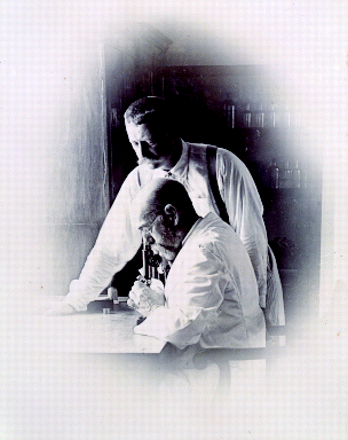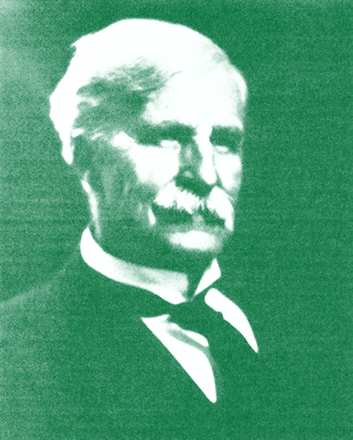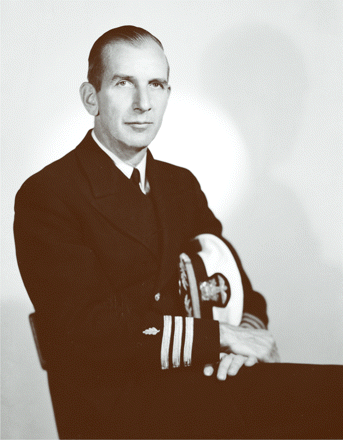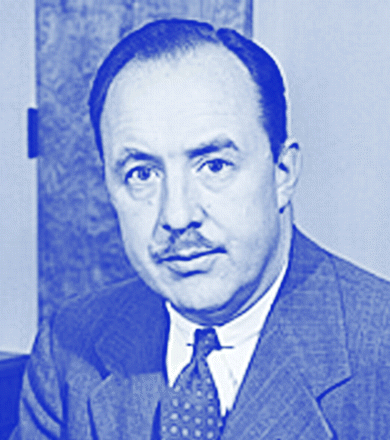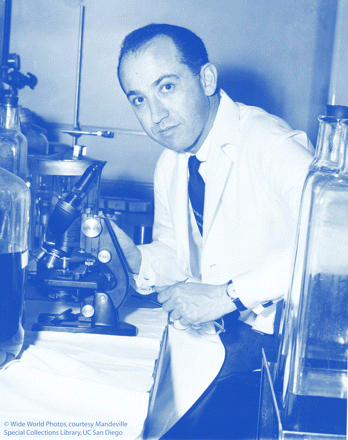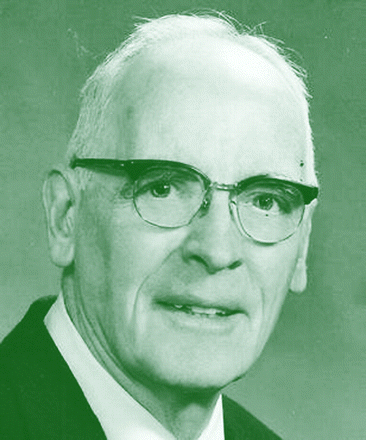The Flu in Retrospect: Etiology and Immunization
The death of Jonas Salk, in June 1995, was reported in major news media world-wide, and his vaccine against polio was everywhere remembered. In the Pocono Record, an obscure newspaper serving the mountainous area of northeastern Pennsylvania, Salk was remembered with fondness by two disparate local people. Merrill Baylor, a seven-year old girl in 1954, had been a test subject in the pivotal clinical trial of the Salk polio vaccine. G. Willard Webster, a biologics production engineer, remembered working with Salk on an experimental vaccine––not for polio, but for influenza (1).
The public associates a great scientist’s name with one specific achievement, as though that were the sum total of his work. Thus, Albert Einstein’s name evokes the theories of relativity, or perhaps the equation E=mc2. Few are familiar with his contributions to the physics of Brownian motion or his elucidation of the photoelectric effect, for which he won a Nobel prize. Similarly the name Jonas Salk is coupled with the polio vaccine which bears his name. It comes as a surprise to find that before turning to polio, Salk had developed a successful vaccine against influenza (“the flu”).
It is an appropriate time to reflect on Salk’s work on influenza vaccine. Since the sudden emergence of the swine flu (H1N1) virus in the spring of 2009, the specter of the “Great Flu Pandemic” of 1918–1919 has been on the minds of the scientific/medical community and the public. The threat has prompted urgent action in developing contingency plans, preparing and testing vaccine supplies, and reinvigorating searches for effective antiviral drug molecules.
Emblematic of this computer age, an educational video game called The Great Flu, is available on the World Wide Web in which the player is challenged to combat a new pandemic. The player’s weapons are public service campaigns, face mask distribution, airport closings, quarantine, and development of vaccines. Each action has a monetary cost. The player has $2 billion to allot in the most effective way he can devise. The video shows success or failure in terms of how many people are infected, and how much societal disruption the epidemic is causing (2). Thus, even the juvenile devotee of video games can learn about the flu painlessly.
Influenza and Its Etiology
The etymology of disease names often reflects outdated concepts about the disease. Malaria was so named because it was supposedly caused by bad air. Influenza was thought to have an even higher origin––the influence of the stars, which was the cause of epidemics (3). Influenza is an acute, highly contagious, systemic disease producing headache, fever, chills, myalgia, and malaise, accompanied by respiratory symptoms, mainly cough and sore throat. In many cases, its onset is so abrupt that the patient can recall the exact minute of onset. In most cases, fever is present, ranging from 38–41 °C. The clinical presentations cover a wide spectrum, from mild, afebrile illness similar to the common cold, to illnesses with severe prostration yet few respiratory symptoms (4). Influenza is also notable for occurring in epidemic waves.
Influenza has posed an especially difficult problem in epidemiology and etiology. Its symptoms do not readily differentiate it from other infections, and the disease seems to vary from epidemic to epidemic. In addition, a number of secondary bacterial infections confuse the picture. Finally, for a long period of time, no suitable animal could be experimentally infected. The discovery in the 1930s that pigs suffer from a very similar disease, and that influenza can be transmitted to ferrets, opened the door to discovery of the viral cause of the infection. Earlier research concentrated on searching for a putative bacterial cause (5).
Pfeiffer’s Bacillus and Other Bacteria
The German physician and bacteriologist Richard Pfeiffer (1858–1945) was a student of Robert Koch, and later, became Koch’s assistant. Pfeiffer was one of the pioneers of typhoid vaccination and he described the phenomenon of bacteriolysis, further recognizing that the breakdown of some bacteria led to the release of heat-stable proteins (i.e., bacterial endotoxins) responsible for effecting diseases (6). (Indeed, the presence of endotoxins is the reason why perfectly sterile solutions may cause fever if injected intravenously.)
In 1892, Pfeiffer, then the scientific head of the Institute of Infectious Diseases in Berlin, isolated a new organism from secretions of influenza patients (5). Certain that this was the cause of influenza, he named it Bacillus (later Hemophilus) influenzae. H. influenzae is a very small (0.2–0.3 μm × 0.5–2 μm) Gram-negative bacillus which occurs singly, in pairs, or in short chains. It is non-motile and has no spores. It is difficult to grow in culture, and highly sensitive to light, heat, and drying (5).
With the discovery of what came to be called Pfeiffer’s bacillus, it seemed that the etiology of influenza had been established. During the disastrous flu pandemic of 1918 researchers around the world sought Pfeiffer’s bacillus in the secretions of patients, in hopes of preparing a protective antiserum or vaccine. The bacillus was found only in a minority of patients. At first, failure to find H. influenzae was attributed to technical difficulties, but eventually it became evident that this bacterium was not the cause of influenza.
In 1918, Peter Olitsky and Frederick Gates at Rockefeller Institute discovered, in the nasal secretions of influenza patients, a bacillus so tiny that it passed through a porcelain filter. The flu virus may actually have been present in that filtrate, but Olitsky and Gates believed the bacterium, which they named Dialister pneumosintes, to be the cause of influenza. It is a Gram-negative, anaerobic, non-motile, non-sporulent rod. It plays no role in influenza, but a search reveals that it has been isolated from subgingival plaque, and thus may be involved in periodontal disease (7). It has also been found in some human brain abscesses (8) and is suspected in other infections.
Besides H. influenzae and Dialister, other organisms––for example Streptococcus, Neisseria catarrhalis, and various types of Pneumococcus––have been named as causes of influenza, but all are now deemed to be secondary invaders (5). It was during the 1930s that the bacterial theories of influenza causation were laid to rest, and the fundamental experiments that established its viral etiology were carried out.
Discovering the Viral Culprit
During the great influenza epidemic of 1918, there appeared, particularly in eastern Iowa, a swine disease closely resembling human influenza. J. S. Koen, a veterinarian with the US Bureau of Animal Husbandry, first recognized it as a clinical entity and named it “hog flu” (9).
The Roaring Twenties were exceedingly quiet as regards progress on hog flu, but in 1931 Richard E. Shope at the Rockefeller Institute published the results of extensive studies of this disease. Working with secretions from sick Iowan hogs, he induced hog flu in healthy animals by intranasal administration of the material. The secretions had been passed through bacteria-retaining ceramic filters, proving that a virus must be the disease-causing agent. During three epizootic (i.e., epidemics occurring in animal populations) periods of hog flu, in which the disease was clinically the same but of varying severity and mortality, Shope found eight strains of the virus (9).
Early in 1933, a flu epidemic was spreading throughout London. William Smith, Christopher Andrewes, and P. P. Laidlaw, of the National Institute for Medical Research at Mill Hill, were convinced that the cause was viral and were working with sterile-filtered nasal washings from ill patients. Their key discovery was that human influenza could be transmitted to ferrets. Nasal washings from two recovered patients and from one person suffering from the common cold were non-infective. Serum from a recovered ferret neutralized the virus’s infectivity, indicating that antibodies were formed during the illness (10).
Smith’s group also investigated the relationship of their newly discovered virus to that of hog flu. They obtained samples of the latter from Shope in the US and found that it produced in ferrets a disease identical to that produced by the human virus (10).
It is noteworthy that both Shope and Smith found it necessary to determine whether Pfeiffer’s bacillus could act as an auxiliary cause of influenza. Shope found that H. influenzae (suis), isolated from pigs, did not by itself produce hog flu. He also provided these cultures to the British group, who found that the bacillus did not produce influenza in ferrets (9, 10).
Later in the decade, further fundamental discoveries were made. The great American virologist Thomas Francis, Jr. (Box 1) isolated influenza virus Type A in 1934 and a new strain, Type B, in 1940. Influenza virus was grown in tissue culture and on the chorioallantoic membrane of the developing chick embryo (until recently the only medium for production of influenza vaccine). The hypothesis that the influenza virus can mutate gained currency. Serum antibody tests and complement fixation tests were developed. In 1941, red-cell agglutination testing beame a useful tool (11). Then, in 1939, a medical school senior named Jonas Salk began working on influenza virus under Thomas Francis, and was introduced to the methodology of virus research.
Thomas Francis, Jr. (1900–1969)
The son of a steelworker-cum–lay preacher and a Salvation Army worker, Thomas Francis, Jr. was born in Gas City, Indiana. His birthplace was briefly a boomtown located atop an inexhaustible field of natural gas which took only about ten years to exhaust (1892–1902). Francis was raised in western Pennsylvania, went to Allegheny College on a scholarship, and received his M.D. degree from Yale in 1925.
After completing residency in 1928, Francis joined an elite team at Rockefeller Institute in research on bacterial pneumonia. After the isolation of influenza virus was reported from Britain in 1933, he switched his interest to influenza research. He was the first American to isolate human flu virus, and discovered the B strain of the virus in 1940. From 1938 to 1941, he was professor and chairman of the bacteriology department at NYU College of Medicine. During this period Jonas Salk, a medical student, became his protégé.
Early in 1941, Francis was appointed director of the Commission on Influenza of the US Army Epidemiological Board. Later that year he accepted an invitation to join the newly established School of Public Health at the University of Michigan. There he focused on a range of infectious diseases. He brought Salk to Michigan, mentored him in his influenza research, and directed the wartime clinical trial of the influenza vaccine which Salk developed.
Francis then turned his attention to the enteric viruses, particularly the polio virus. In 1953, he was asked to design, supervise, and evaluate field trials of the polio vaccine developed by Jonas Salk. Against opposition from the National Foundation for Infantile Paralysis, a major source of funding, he insisted on a placebo-controlled double-blind study. He designed and oversaw a trial unprecedented in scope and magnitude. About 1.8 million children from 217 areas of the United States, Canada, and Finland were enrolled in the trial. On April 12, 1955 Francis was able to announce to the world that the Salk vaccine was “safe, effective, and potent.”
After this, Francis’s expertise in epidemiology was highly sought. At the US government’s behest, he traveled to Japan in late 1955, to develop new objectives and strategy for the Atomic Board Casualty Commission (ABCC). The result was a “Unified Study Program” with a plan to follow the natural history of a population exposed to nuclear radiation over its entire lifespan. Subsequently, he created the “Tecumseh Study” (1961), using the community of that Michigan town for a bio-statistical study of the precursors and epidemiology of chronic diseases. He thus extended the application of epidemiologic methods from infectious diseases to non-infectious diseases and their contributory environmental factors. This approach is currently reflected in the still-ongoing “Framingham Study” which has generated much important information. He received the US Army’s Medal of Freedom in 1946 (19).
Jonas Salk: From Bronx to Ann Arbor
Jonas Salk, a boy from the Bronx and the son of immigrant parents, entered New York University College of Medicine in 1934. He apparently knew even then that his calling lay in scientific research rather than medical practice. His brilliance was such that, after his first year, chemistry professor R. Keith Cannan suggested he take a one-year leave of absence, under a fellowship, to study biochemistry. He concentrated on learning protein chemistry and returned to medical school in 1936. In the senior year, each student was allowed two months for elective work. Salk chose to work under Thomas Francis, Jr., chairman of the bacteriology department (12).
As Francis told it later, he and Salk grew influenza virus at the medical school laboratory. Salk then carried the virus to the Rockefeller Institute, where George Lavin subjected it to UV radiation and further testing. In 1940, Salk, with Lavin and Francis as co-authors, published his first paper describing the effect of UV on the virus’s antigenic potency. An accidental discovery Salk made during this time but published later was that influenza virus could be concentrated, and thus partially purified, by adsorption on calcium phosphate at neutral pH (13).
Salk continued to worked with Francis, who secured for him a $100 per month grant from Rockefeller, until entering upon his internship in March 1940 at Mount Sinai Hospital in New York. Even though his main interest was basic research, his empathy for the suffering of people led him to become an outstanding intern and a fine clinician. Upon completing his internship, he sought a fellowship which would allow him to study human immunity to viral diseases. He was turned down at Rockefeller and other institutions; even the recommendation of Dr. Francis was unable to overcome the prejudices which were still considered respectable at that time (12).
Meanwhile, Francis had become head of the Department of Epidemiology at University of Michigan School of Public Health, working on both influenza and polio. He invited Salk to join him, offering grant support in the amount of $2,100 per annum from the National Research Council and the National Foundation for Infantile Paralysis. Even though he yearned to live in New York, Salk could not turn down this opportunity, arriving at Ann Arbor in April 1942.
Developing Influenza Vaccine for the Army
The armed forces were being built up at a rapid rate through enlistments and selective service. With large numbers of young men concentrated at military bases, on warships, and on active battle fronts, the commanders had to face the possibility of epidemics, especially influenza epidemics.
The 1918 pandemic had taken a severe toll on the American military. It was necessary to prevent such losses from recurring.
Before he came to Michigan, Francis had been appointed director of the Commission on Influenza of the US Army Epidemiological Board. When Salk joined him in Ann Arbor, he was assigned to work on influenza exclusively, under Francis’s tutelage. Later, in 1943, when Francis was given additional resposibilities by the Army, Salk became acting director of the Army’s Influenza Commission. The papers he authored or co-authored between 1942 and late 1947, when he left for Pittsburgh, show the scope of the research conducted at Ann Arbor. The topics include influenza epidemiology, laboratory diagnosis, methods for estimating virus concentration and antibody titer, stability of the red-cell agglutinating factor, vaccine standardization, clinical testing of vaccine, and adverse reactions to vaccines. Even during the 1950s at Pittsburgh, he published papers on influenza, including studies on the use of adjuvants in vaccines.
Just as an army sets up sentinel posts to prevent enemy infiltration, so did the Influenza Commission set up early detection posts at various military bases in the US. This enabled Salk’s group to detect an outbreak of type A virus at its onset in Michigan, before the disease was spotted elsewhere in the country (14). In spring 1943, Salk traveled to Fort Custer, MI, to investigate an outbreak of atypical pneumonia. He found that it was caused by the type A Weiss strain of influenza and included that strain in a vaccine which was to be field tested in winter of 1943–1944 (12).
The vaccine being developed was tested for efficacy on male residents of certain wards at Ypsilanti State Hospital, a mental institution located near Ann Arbor. Vaccines prepared from type A and type B viruses were tested separately. Both induced resistance to challenge with active virus. The vaccines were best if administered two weeks prior to exposure, and the effect was greatly reduced after 4.5 months (15, 16). Informed consent was not a consideration in that era; these men were certainly not able to provide or refuse it.
Scale-Up: Salk, Sharp & Dohme, and Webster
Once efficacy had been confirmed, the next step was to prepare a combined vaccine for large-scale field testing. To prepare the vaccine, virus was grown in embryonated hens’ eggs. The extra-embryonic fluid from each egg was removed by syringe and pooled. The virus was then concentrated and treated with formaldehyde 1:5000, which inactivated its infectivity while retaining its antigenic properties. After sterilization by filtration, a bacteriostatic preservative was added. The vaccine was filled into 50 mL multi-dose vials. For the clinical trial, an inactive control solution was prepared, composed of normal saline, formaldehyde, and preservative (17).
Once this procedure was worked out in Salk’s laboratory, it was necessary to prepare the production-scale quantities needed for administration to thousands of men. To obtain these supplies the Army contracted with Sharp & Dohme (S&D), a maker of pharmaceuticals and biologicals located in Glenolden, a suburb of Philadelphia. Later acquired by Merck, in the forties S&D was a major manufacturer of vaccines as well as blood plasma. Unsurprisingly, scale-up proved to be a problem. The labor-intensive process involved inoculating myriads of eggs individually and, after incubation, drawing off the allantoic fluid, all under aseptic conditions. It may have been S&D’s first experience with an egg-based process, as the antitoxins and toxoids of that time (e.g., diphtheria and tetanus) were made from horse serum. The people at S&D contacted Salk, who came east to work with them.
For two weeks in the summer of 1942, Salk remained at Glenolden, working mainly with Willard Webster (Box 2), a research assistant in S&D’s new Virus Research Department. What makes these two weeks notable is that we have first-person comments from both men about their collaboration. These materials were graciously made available to this author by Webster’s widow. Thus, in the 1995 newspaper interview cited above (1), Webster described Salk as follows: “He was a bundle of energy. He was most energetic, and most understanding and most helpful. Whenever he saw an area where he thought he could contribute, that was certainly the way he progressed.” More specific information is found in a memoir of his life written by Willard Webster (18):
G. Willard Webster (1913–2009)
Willard Webster was educated at Westtown Friends School, located about twenty miles from Philadelphia. During the early Depression years he served with the American Friends Service Committee, aiding coal miners’ children in Kentucky and Tennessee. From 1933 to 1945, he worked for Sharp & Dohme (S&D), a firm manufacturing pharmaceuticals and biologicals. While employed there he completed his college education at University of Pennsylvania. In 1945, he joined Wyeth at their penicillin plant in West Chester, PA. During these early days of penicillin manufacture, he was instrumental in scaling production from bottles to 5,000-gallon tanks. From 1950 to 1978, he worked for the National Drug Company, first at their Philadelphia head-quarters and later at their biologics plant in Swiftwater, PA. He stayed on at Swiftwater, as Associate Vice President of Production and Engineering, through changes in ownership: the facility was first acquired by Connaught Laboratories and is currently part of Sanofi Pasteur. He retired in 1993, after a total of forty-three years of service.
During a career that spanned an enormously productive era in medicinals and biologics, Webster contributed to many important therapeutic developments. At S&D before War World II, working in pharmacologic testing, he was involved with the development of the anesthetic barbiturate Delvinal, and the second-generation antibacterial sulfonamide Sulfadiazine. After being transferred to the virology research department, he worked on a number of vaccine projects. Webster’s ingenuity in dealing with production-scale equipment brought him into contact with major figures in virus research. He was apparently the first to suggest centrifugation as a means of separating virus particles from fluid. This caught the attention of Wendell Stanley, Nobelist and discoverer of the tobacco mosaic virus. In 1944, Webster harvested flu virus from 20,000 eggs and delivered the centrifuged concentrate to Stanley at Princeton. Stanley asked him to give a presentation before an audience which included Nobel laureates and other noted Ph.D. scientists (18).
His expertise in freeze-drying and experience in formaldehyde inactivation of viruses brought him into collaboration with Albert Sabin. In 1942, S&D seconded him for a stint as consultant to Sabin in Cincinnati, where for a week he stayed as a guest in Sabin’s home. In 1944 Sabin, now in the Army Medical Corps, needed freeze-drying equipment which could operate without dry ice, to take with him overseas. Webster delivered such a unit from S&D to Sabin, who was then at Princeton. In his memoirs Webster recalled his excitement and pride when Sabin took him to lunch at a dining room reserved for Ph.D.s, department heads, and Nobel laureates. Webster was then a 27-year old research assistant with only a bachelor’s degree (18).
In 1987, in recognition of his work on designing the building and on influenza vaccine, the board of directors of Connaught Laboratories,Inc. named their new influenza vaccine building at Swiftwater, PA in Webster’s honor.
“We did not have a satisfactory facility in which to produce this flu vaccine. Our new research laboratory was finished, but not furnished, so we had to quickly throw the equipment together to handle 5000 embryonated chicken eggs a day for the project. The results of this study proved the vaccine to be highly effective. Sixty years later the vaccine, though [more] highly purified, is the most extensively used preventive for influenza.”
Salk’s feeling toward Webster was expressed in a 1988 letter, after Connaught Laboratories dedicated the influenza building at their Swiftwater, PA facility in Webster’s honor. Salk, then attending an international AIDS conference, wrote to Webster from Stockholm:
“Dear Willard:
I have just learned of the well-deserved honor and recall vividly our work together in the summer of 1942 in the preparation of the first batch of influenza virus vaccine field tested that year. I shall always recall the pleasure of working with you and Betty Lee Hampil on what, in retrospect, was an historic event” (18).
Salk, with his intimate knowledge of his vaccine, and Webster, with his creativity in solving equipment and production problems, succeeded in scaling up the production process. Sharp & Dohme delivered the required supplies to the Army, and the clinical trial was enabled to proceed.
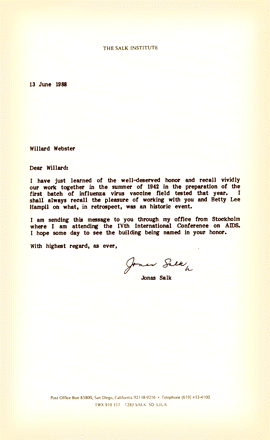
The First Influenza Vaccine
The Army’s controlled trial got under way in the fall of 1943, under the direction of Thomas Francis. The subjects were about 12,500 men in units of the Army Specialized Training Program at universities and at medical/dental schools in different areas of the US. The study was double-blind, with active and placebo alternated among the subjects. Concurrently, in mid-November an epidemic of type A influenza broke out in the Midwest, soon spreading to other sections of the country. This epidemic was mild, the illness generally lasting 3–4 days with a low incidence of complications. Among those inoculated the influenza attack rates were as follows:
| No. of Subjects | Attack Rate | |
|---|---|---|
| Vaccinated | 6,236 | 2.22% |
| Controls | 6,211 | 7.11% |
Thus, the first influenza virus vaccine was proven to be effective (17) an accomplishment made before Salk’s––thirtieth birthday.
There can be no doubt that the experience Salk gained through his wartime work on influenza was key to his later triumph in the battle against polio. In addition, his influenza vaccine has been the template on which influenza vaccines have been built in the succeeding decades, and on which we base our hope for blunting the effects of the current H1N1 virus.
- Copyright © 2009
References
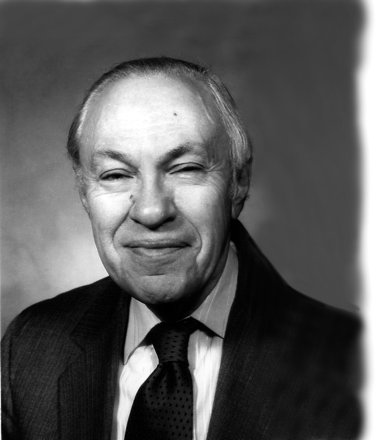
Stanley Scheindlin, DSc, holds a BS in pharmacy from Temple University and graduate degrees in pharmaceutical chemistry from Philadelphia College of Pharmacy and Science (now University of Sciences in Philadelphia). His academic research dealt with plant constituents and chemical interactions of vitamins. In his pharmaceutical industry career, he handled new drug formulation developments, and later regulatory affairs, presiding over the filing of about 100 generic new drug applications and two innovative drug applications. Now retired, his activities include volunteer work, consulting, and writing Reflections pieces for this journal. E-mail: stansch{at}verizon.net

